Skateboard photography can be quite interesting and exciting for a photographer. You’ll find skaters in most cities and towns … either in skate parks or out on the streets. So pull out your camera, and get ready to try out the collection of skateboard photography tips that you will find below. They come with some great example photos too.
The tips aren’t massively in-depth because the intent isn’t to lecture about these things. Instead, take what you can from them, build on them with your own knowledge, and study the photos for inspiration. You’ll also notice that many of these tips can be applied to other types of photography, so keep an open mind while reading.
1. Skateboard Portraits
Even though the exciting part of photographing skaters is when they’re in action, you shouldn’t forget that they’re still people with a face. If you don’t know the skaters, you might try working up the courage to ask them for a portrait. A lot of these folks are interesting and outgoing – the perfect ingredients for a great portrait.
2. A New Perspective
Shooting at your normal stance is so 2005. Shooting from a crouch is a little better. But if you want some really interesting stuff, get down on the ground and make giants of the skaters. If you’re really brave, let somebody jump over your head (of course, use caution and don’t be stupid about it).
3. Subject
The skaters aren’t the only good subjects out there – shoot the boards too! Focusing the attention on the board and allowing the legs and feet to become secondary subjects can be quite powerful.
4. Tilt the Frame
Adding tilt to your composition naturally creates a feeling of uneasiness and slight chaos. That type of mood goes quite well with extreme sports such as skateboarding.
5. Premonition
Watch your subjects (or even just one subject) and take note of what they’re doing. I had been watching this guy skate for 15 or 20 minutes and I saw him move the trash can in front of the ledge he’d been jumping from. It was obvious what he was going to be doing, so I positioned myself, got the camera ready, and fired one off right at the perfect moment.
6. Action Sequence
If you happen to have a tripod with you (or a really steady hand), you can leave the camera pointed in one direction and rapid-fire as the subject crosses your path. Then use a little post-processing trickery to create a composite, and you’ve got a slick little action sequence.
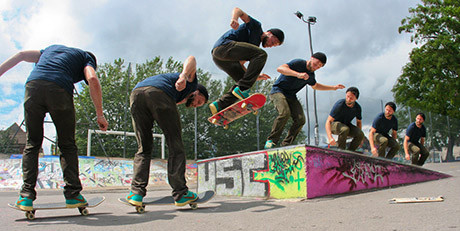
Photo by thEOS. [CC by-nd]
7. Alternative Sequence
Catch a bunch of different poses from one of the skaters and slap them all together. Go beyond the typical diptych or triptych – four or five makes for a pretty cool image.
8. Skate Photography at Night
Working at night can help you isolate your subject better than during the day. And depending on your light source, you can really add some intensity and contrast. Alternatively, working at a high ISO can produce beautifully gritty photos (especially if you go black and white).
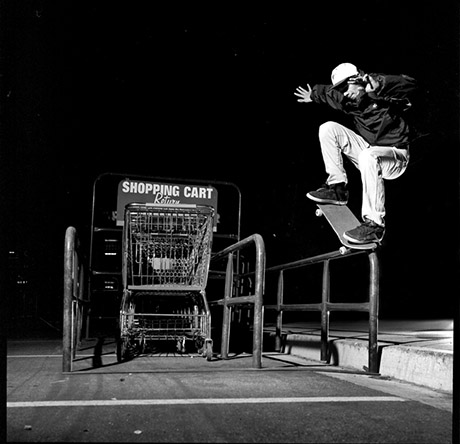
Photo by tunaboat [CC by-nd]
9. Up Close
Don’t just sit off on the sidelines trying to keep your entire subject inside the frame. Get up close and focus on different parts of the skaters – just stay out of the way or you’ll tick people off and kill your chances of finishing the session. If you’re unsure, talk with them and let them make suggestions for getting close-ups (you can bet they’ll have some good ideas).
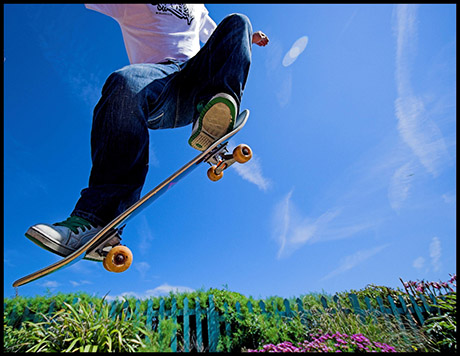
Photo by Bushery [CC by-nc-nd]
10. Skateboarder Silhouettes
If the lighting is all wrong for your typical photos, work with it and go for the silhouette shot. This works best if the sun is somewhere other than straight above (preferably behind the skater and in front of you) and if you use manual exposure settings or play with your exposure compensation.
11. Show Speed
Rather than freezing the action in every shot, try mixing it up by slowing down that shutter speed and conveying the motion of the skaters.
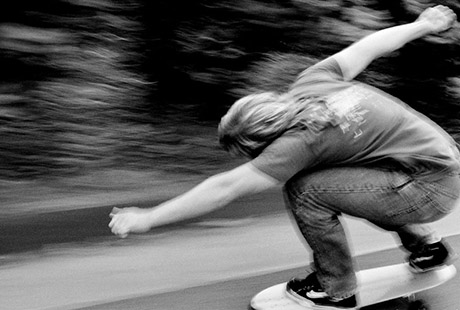
Photo by quiiver [CC by-nc-sa]
12. Wide Angle
Using wide angles will allow you to get fairly close while including much of the surrounding scene. Pay attention to the shapes and structures around the skaters and include them in the photo for more visual impact.
13. Shadows
If it’s nice and sunny, pay attention to the shadows. Sometimes they can be quite interesting subjects – especially if you cut out part of the person creating that shadow.
14. Flash
On the flip side of slowing down and capturing motion, sometimes you’ll want to freeze the subject completely. Unless it’s bright and sunny, you may need to use a flash to accomplish this. Try working with an off-camera flash for more interesting results.
15. Skateboarding on the Streets
Not all skaters stick to the skate parks – with a little luck, you can find skaters in just about any city. Look for rails, steps, ramps, or any other structure that could be used as a skater playground. Capturing skaters away from a park can make your skateboarding photos more raw and real.
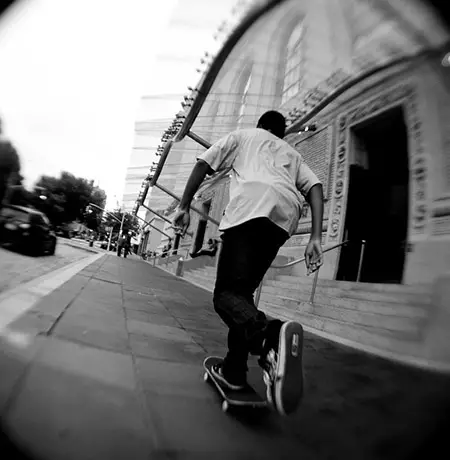
Photo by JEKY [CC by]
16. Oddities
Always keep your eyes open (and your camera ready) for the oddball encounters. You never know who or what might cross your path unexpectedly.
17. Characters
Likewise, watch out for interesting characters. They’re probably the most fun to capture.
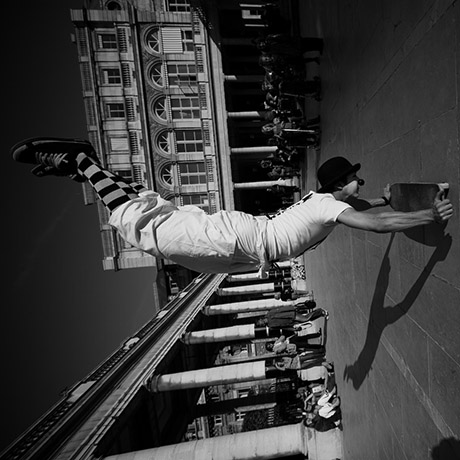
Photo by Eole [CC by-nc-sa]
18. Step Back
Not every skateboarding shot needs to be up close and tightly cropped. Step back a little and make the skater a small, but important, part of the scene. Also, if you’re near any structures, try going vertical and shoot down onto your subjects.
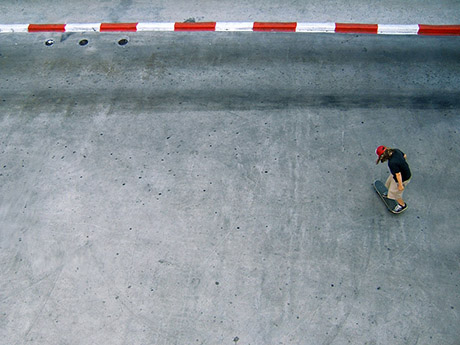
Photo by baboonô [CC by-nc]
19. Candid Skateboarder Photographs
Make good use of longer lenses to give yourself more working distance – this allows you to stay out of the way while catching true moments candidly. And don’t put the camera down as soon as the action is over. Sometimes you’ll find great shots when the skater isn’t even skating.
This guest post is by Brian Auer – a photography enthusiast, blogger, photoblogger, and podcaster.
This is part of the Beyond Photo Tips Birthday Special Series. Go here to see all the posts so far.
Help Us To Continue Creating
Get our email newsletter to stay up-to-date with our latest posts. It’s easy to read and is mailed once in 2 weeks.
The easiest way to support Beyond Photo Tips is by using our affiliate links when you buy anything at all. It will never cost you anything extra, and we get a small commission from it, which helps us a LOT! We share our recommended equipment list here.
Some of the links to products on this website are affiliate links, and we only ever link out to gear that we recommend.
You could also show your appreciation by buying us a coffee. Finally, we appreciate you being a part of the community, so do say hi!

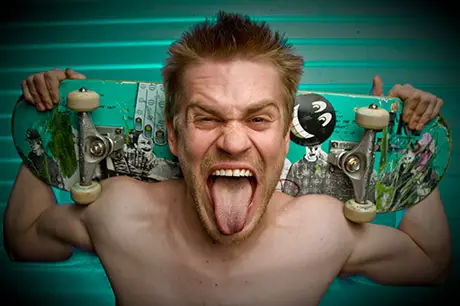
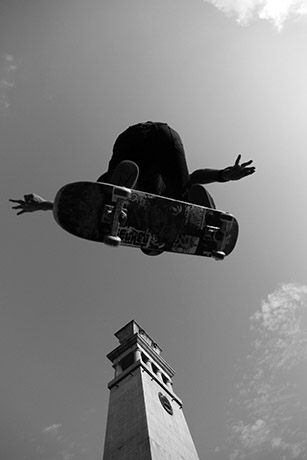
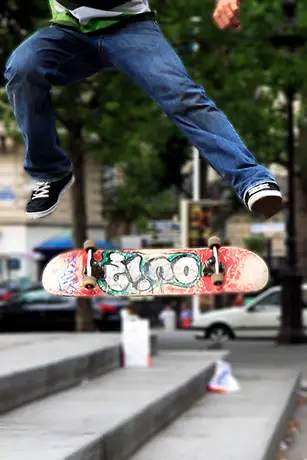
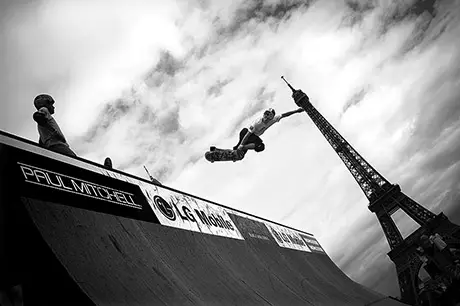
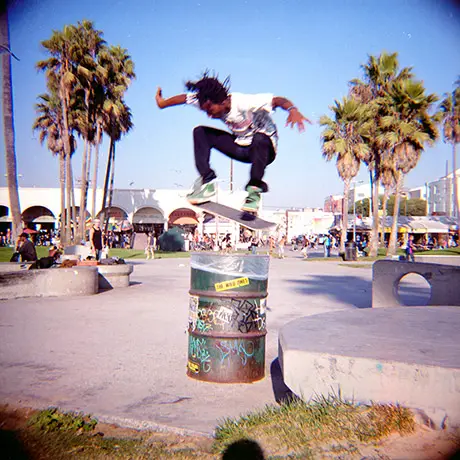
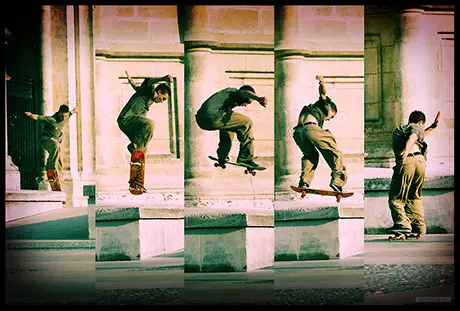
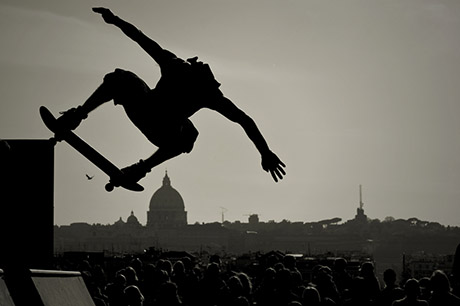
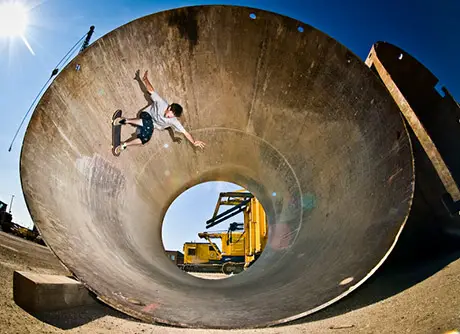
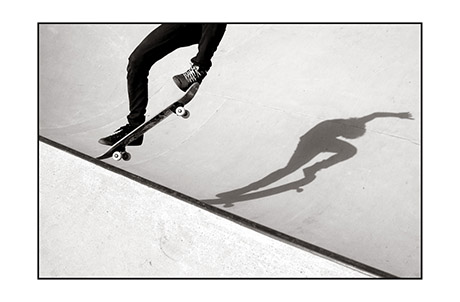
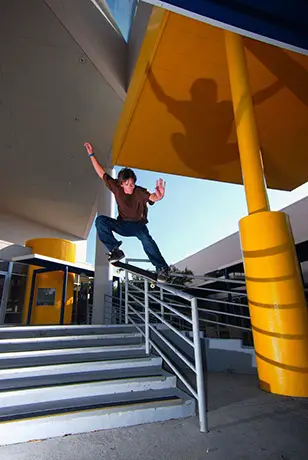
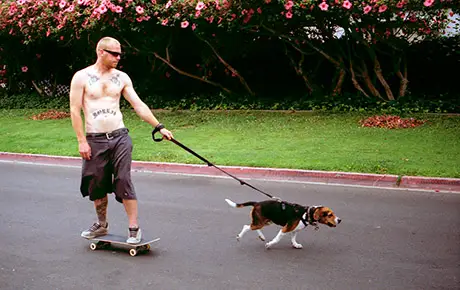
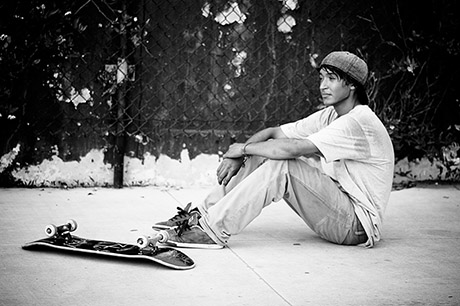

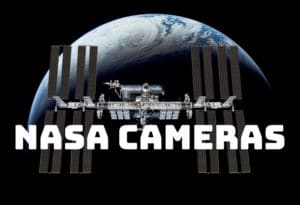


Brian,
Did I mention how cool this post is? Rockin’ dude!
Thank you for sharing it with our readers!
My pleasure Susheel! I had a lot of fun putting this one together!
Great article Brian. A lot of good ideas here.
Ask and thou shall receive Brian…great post! A lot of these tips can be applied to photographing any subject, not just skaters…especially #18 and #19. Both of those are favorites of mine when photographing weddings or events.
This goes beyond just radical skateboard photography…just about any human (or animal) action sport can make good on these excellent photo tips. The photos are truly amazing!
I have to STRONGLY disagree with tips #3 and a little bit of #9 and #13. RULE#1 in Skateboard photography, NEVER cut off the skaters heads in a photo. No skateboard magazine will publish those photos.
#1 Skateboard Photography Tip should be: RESEARCH. Pick up a skateboard magazine. Look at other photos in the magazines. Read the articles. Understand what the audience wants to see. They don’t want to see a board, kids look up to these pros as well as the tricks they do. These kids know every sponsor a pro has, and every trick they’ve done at every famous spot or skate park. There is way way way more to it than just a mag full of photos.
Any photographer aiming to shoot skateboarding must have some sort of background in skateboarding, if not, you’ll need to do A LOT of research if you want know how to make your photos more appealing to a skateboarder audience and skateboard magazines. FYI: Most skateboarders hate seeing photos in non-skateboarding magazines or newspapers, because almost every time, the photographer, who has no skateboarding background or knowledge, only uses techniques familiar to him or her and THINKS it’s a good photo.
Skateboarders can INSTANTLY tell if the photo was taken by a real skateboard photographer or not.
Thanks for your thoughts, James. I think that any type of creative work begins with research. It probably goes unsaid… Research, experimentation, gestation, and more experimentation.
That said, I think that there is a lot of space for experimentation and having fun. You’re looking at these tips from a particular perspective, and I suppose from that POV, your points are valid. However, you don’t have to be a “skateboarding photographer” to enjoy taking photos of skateboarders.
BTW, I thought thate skateboarding was all about being free, trying out your own thing, and having fun… Why so serious? ;)
#2, #3, and #4 really!? #2- Shooting underneath the skater is so 2005! How many shots from underneath do you ever see in a mag? #3- Never, never cut off the skater, looks terrible, you want to see his face. Also, wont be in a mag. #4- I think that was the only shot where the shot was tilted. The half decent shots shown above were always horizontally or vertically straight.
Fashion and trends come and go. You don’t have to publish in a magazine to take skateboard photos… All you need to do is to have fun with your friends, and give them photos that they like, while also taking the photos that you want. Collaborate, have fun, share your photos on your insta, twitter, or whatever is fun at the moment.
I must say that these are rather spectacular. I am looking to go for skating photography in the near future so these tips have given me great advice.
Thanks for posting!
Thank you.
its obvious that whoever did this article isnt a skate photographer and if he is he cant be into skating all that some of this is really bad advvice. If you want to get better at taking photos you should probably be into skateboarding and check out magazines and see what other people are doing
Ryan, while looking at what others are doing is probably a nice thing to do, it won’t earn you an identity. You should look up a guy called David Carson who designed surf magazines. You probably know of him, and his work. I don’t think he copied much. Having an outsider’s perspective can be fun first of all, and secondly, it can help you to do well in a career that values individuality and fresh thought. It could also get you cast aside… But that’s the risk that you take if you want to push your own vision. Either path is valid. Neither is invalid. Choose your path. Most of all, have fun with it.
Dope website bro! I like it, keep em comin, I’ll read it!
Take me some pics dude!
Awesome mang. Real helpful.
DUDEE BRIAN!!
Amazing!, I just started to photograph skaters, as I think it’s hell interesting and amazing way to spend time.. and you really helped me out, as I was cutting short of ideas!
Rock on man! and keep ’em comin’!
:):)
Holy shit…pic in tip14 is my school….and great tips.
I completely disagree with #2 and #3. Sometimes I use tilt like in #4, but only when we’re hitting launch ramps.
Thanks for your opinion, Owen. Useful.
If you wish to join the boring masses of photogs in skate magazines, by all means, shoot the same shot that everyone else has. If you have some actual creativity, think & see outside the norm. Great tips for real photographers.
you should learn a little bit more about skateboarding if you want to take good skate photos…
cutting off a skater head like tips #9 is a bad idea..
and, skate mag aren’t boring!…, so read it.
a good skate photo is not about photography technique.
it’s about skateboarding.
the trick a skater does,
who the skater is,
the obstacle the skater jump off, slide or grind…
is much more important.
Hey Wizz, thanks for stopping by and commenting. Your points are valid… But I think that there is always space for creative interpretation.
This is rad. Thanks for posting it :D
yeah i agree with the skaters here i am a skater/photographer and cutting off the skaters heads is a bad idea. thats why we use fish eye lens so we can still get close up shots without cutting off the heads or any part of the body also another tip you can use is to use your surrounding like if you can find a peep whole or between trees or bushes. well im gunna go so peace and hope you learn more just go and have fun.
Thanks for your thoughts George.
Great Tips, Awesome Job On The Blog.
Ryan
Nice tips. What usually the focusing mode when capturing these action stopping shots? AI servo or AI focus?
On the canon, I would go with AI Servo, and ensure that my focus point selector is in the right place when I click the shutter release.
Hey those are really great tips! I’m taking photos with my digital camera (panasonic lumix DMC-FX150) and working it good, but I’m thinking of getting a more powerful device.. I really don’t know much about cameras so I don’t know what I might be looking for.. any ideas? I heard 35mm are good for sport photography in general.
Thanks
Yes, 35mm cameras, more specifically, SLRs are better for sport photography. Because of the speed of the action, SLR cameras are necessary to really understand what you’re capturing in the frame.
some of the tips just might help me
Wow really good to know about your article. keep up the great job and the spirit. If you want to know more about the skateboarding then please go through Skate Shops’. thank you…
Good article here, however i must say that this isn’t what a skateboarder photographer would take as an opinion as a starter. As a fellow skateboarder and photographer myself, these photos arent what you would see in say, a skateboarding magazine like Thrasher or Skateboard Mag. The kind of photos you’ll see a skateboard photographer has taken and what a non skateboard photographer are completely different, as these are hints to a non skateboard photographer.
None-the-less good article, i am impressed.
Check out the kind of skateboarding photos a skateboarding photographer takes on my flickr.
http://www.flickr.com/photos/ryanbradley/
Two years later, still a great post.
Thanks. :-)
I’m a photographer/skater and I only enjoyed 8 12 14 15. For the people that think these shots are cliche because its all over a skate magazine your wrong. All these shots are cliche everything has been done. What makes a good skate photograph is the scene, the trick being done and the size of the gap or set of stairs they are doing the trick on. Also its about the skaters style you need him entirely in the frame. You also need the area where he will be landing in the frame as well and where he came from. Photographing Skateboarders is different from other sports because its more of an art then a competition and most skateboarders are photographers and videographers themselves. So if you don’t have any skateboard history do us a favor and stay away from skateboarding you’ll make it look stupid.
First off I would like to say that if more people bothered to refrain from criticisms and get proactive as you have done – (@MARK KLECHA #So if you don’t have any skateboard history do us a favor and stay away from skateboarding you’ll make it look stupid.) they might just understand that is an artform (oh he did say that didnt he?) and that there are no rules. I enjoyed the varied shots here that you wont always find in the skate mags as most published fill some niche that is accepted unless of course you have paid your dues. But photography is a hobby, a passion, and it doesnt take a skater to see what is a good photo. Moreso to a good photographer. I skated for a lifetime and took photos and little hints like this would have given some clout to some of my underwhelming photos.
Enjoyed it and all artists need not to live by any code. Long as their work pleases them. Well IMHO that is. Good stuff.
Thanks for your thoughts Acid Paranoia and Mark Kelcha.
I think that there is enough space for both ways of thinking… There is space for the “do your research” way of thinking, as well as the “I want to take photos and share them” way of thinking… In a field where style, individuality and rawness are valued, I’d think that more skaters would be open to experimentation, fun and new thinking. In a field where failure is part of success, one would think that those lessons learnt on tarmac and skate parks would be transferred to other facets of life.
In short, do what you want to do… If you succeed on your own terms, that’s great! That’s skateboarding, that’s life. You can follow the rules, and skate within the lines, and you could succeed at that too… Sure. Maybe… But if you can work with your aesthetic, figure out what makes the pics look bad, and work towards a unique identity and style, that may be valued in an industry like this.
Have fun though. I think that’s always most important.
Brian, thank you very much for posting this. Im 15 and i started photography about 2 months ago and this post is a lot of help to me so thank you again for the help!!!
Read skateboard magazines like Thrasher and Trans World to see the shots that are being published.
aww i have so many shots i could send that would be perfect in here, i love the ones used very nice x
I sometimes wonder why we as skaters tend to become everything we hate when we become defensive. Closed minded, non accepting and fearing. Some of the things said here make us no better then the people who don’t understand us and tell us not to skate. Yes you have a major gap advantage if you are a skater yourself….but if your a skater and cant shoot for crap then really its no advantage. This dude isn’t saying hes going to go and try to publish these in Thrasher. He’s just giving his perspective. For the people who do want to get published in skate mags….you have to start somewhere. Most people that want to get published in skate mags are skaters anyway.He said “take what you can from them.” ….meaning take whatever knowledge is there. I understand some people will take this to every letter and try to follow it to the last period. Those are the people that have no creativity and will hang themselves out to dry anyway. So don’t worry about those people. Skating boarding is as universal as a smile. Just do what you love & have fun. Its called freedom.
Thanks Immanuel. You mirror some of my thoughts.
What modes are best to set the camera? Sometimes the image comes out wrong for me D:
Typically I’d suggest trying manual settings so that you get a feel for what the camera is doing. However, if you prefer to let the camera do the work, set it in ‘sports’ or ‘action’ mode. Else, use Shutter Priority (Tv on the mode dial) and set the shutter speed to something above 1/250 of a second (assuming you have sufficient light for that shutterspeed). Hope that helps.
I like this post and the pictures a lot (but I agree with the other people about cutting skater’s head)
I was talking directly too Jeff who said
“If you wish to join the boring masses of photogs in skate magazines, by all means, shoot the same shot that everyone else has. If you have some actual creativity, think & see outside the norm. Great tips for real photographers”
In fact I like this article it has good ideas for photography and I know this guy isn’t trying to publish these in a thrasher. But what Jeff said about cliche photos in skate magazines just hit a nerve. The pictures in mags have allot of work and depth to them like I said in my previous post and I guess it takes a skater to know what I’m talking about. Also the last thing i said about staying way from skateboard photography was meant for people that think they can do a better job then whats in a skate magazine which was also directed to Jeff.
Mark, I don’t think any field needs gatekeepers. Art is self-selective. If it works, and has appeal it will spread. People needn’t follow a trend to be successful and to be published. They can create a trend … as most of the skating pioneers did. I think we can take lessons from skating itself, and apply it to our daily lives, and to our photography. Brian’s article goes into a lot of different thoughts, and you needn’t restrict yourself to those, or even take those points to heart. I think that he has some really great points, and everyone can learn a little bit from each of them. The most important being “do what you love’ (which is implied throughout).
Thanks for taking the time to comment. I wish I’d replied a decade earlier, and it would have been a conversation. :)
I’m photographer/skater too, I think that in a skate photo you have to try to capture the things that Mark said but you also have to be creative. I read the Thrasher, Transworld, SkateboardMag and more and what I see in every photo is more than just the gap, I think that you have to capture the moment, the emotion of the skater. If you don’t try to do new things the public becomes bored. I think that all of the skate pics you see in the skate mags have to be always creative and inovative. But one thing is certain never, but never cut the face of the skater you must always capture the skater and the “obstaclle” he is trying to overcome.
But neither less it is in fact
I think context is important. Photos for the skater are different from photos for a magazine, and magazine photos are different depending on the magazine itself… Finally, the images that you want to make for yourself should be whatever you want. I think that there is occasion, and reason to photograph all of the above. Thanks for your thoughts about trying to capture new image styles, the moment and the emotion of the skater. I think they’re all very pertinent thoughts.
Skateboarding tricks are very raw too catch. They have the most interesting pictures if you know how to take them.
As a skateboarder as well, I’ll have to agree with some of the other skaters commenting on this; No you can not cut off the skaters head, and No you can not shoot a “guy in the sky”. It is still of course important to think “outside the box” on certain shots, but you can also tell by looking at the magazines that there are overall criteria that must be met. So as much as this was an informative article, at the end of the day there are some rules of skateboard photography that can not be broken.
Cheers!
I thought skateboarding was all about developing ‘new rules’ by breaking the old ones. There are no limits with what you can do on a skateboard, so why limit your creativity with a camera? Find your own path… If that means showing feet, then show feet. If it means showing sky, show sky. But also, collaborate with the skaters… incorporate their ideas, and show off their skill… Give them pictures that they can be happy with. However, when showcasing your work, there’s no reason why you should limit yourself to what ‘everyone’ thinks are nice. Blaze your own path, Mike. Have fun.
nice
nice
nice
Ive been a skater and photographer for many years, what i enjoy about both is the freedom of expression and the ability to not conform to rules. I cut the heads off skaters if i want, depends on what your taking a photo of, if im taking a landscape shot its sometimes good to break the rule of thirds, conforming to rules all the time will stifle creativity. I hate commercial photography as you have to adhere to a set of rules, many technically perfect shots have been taken over the years which is fine, but sometimes technically perfect does not always make the most interesting photo, also some of the things you dont see but are suggested can be as important as a clearly defined image. Remember skating has no rules and neither doea non commercial photography. On a side note i take sufing photos, but i dont surf, i take food photos, but im not a chef, i take landscape photos, but im not a gardener, to say people should not take photos if they are not skaters is closed minded ignorance, the same attitudes i deplore from people who think all skaters are wasters.
Thank you for your uplifting comment John. I recognise that this is coming a decade later, but it still makes a difference. Thanks.